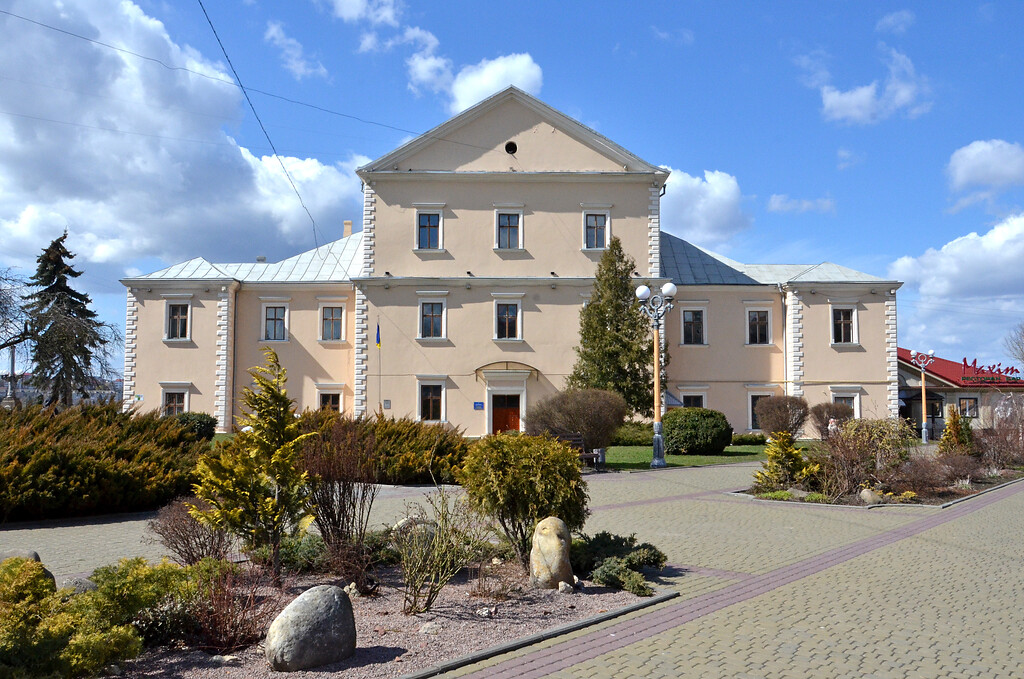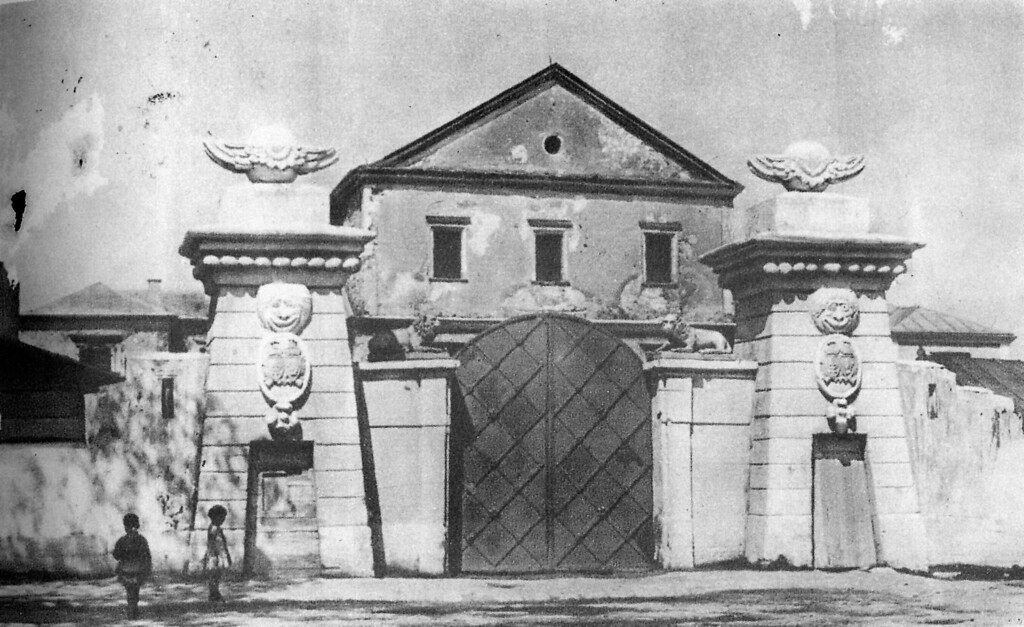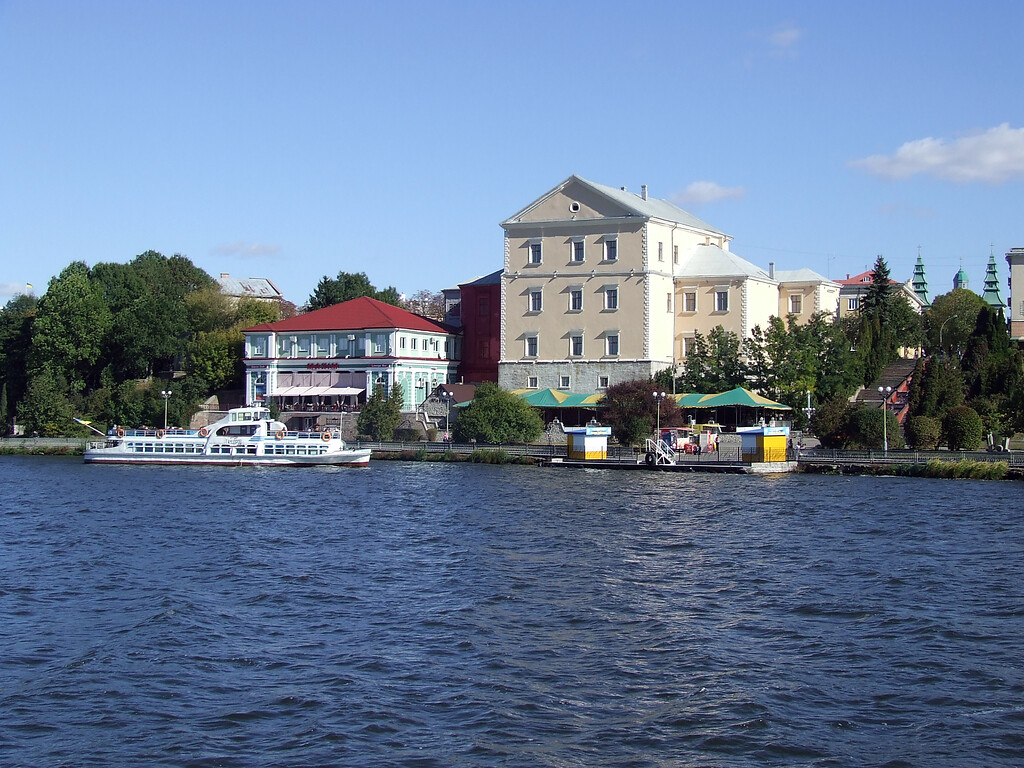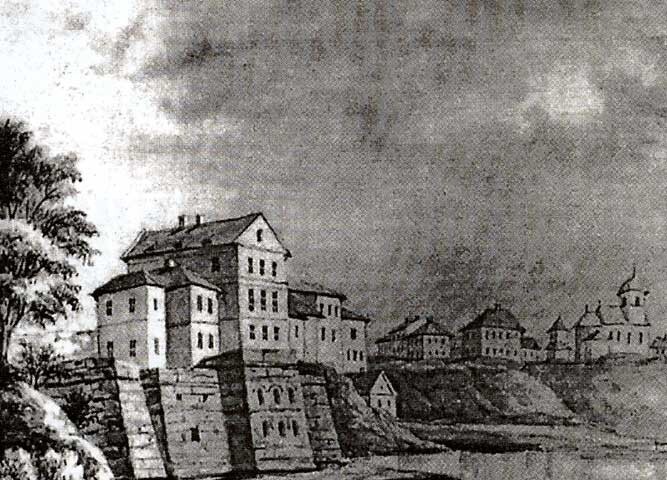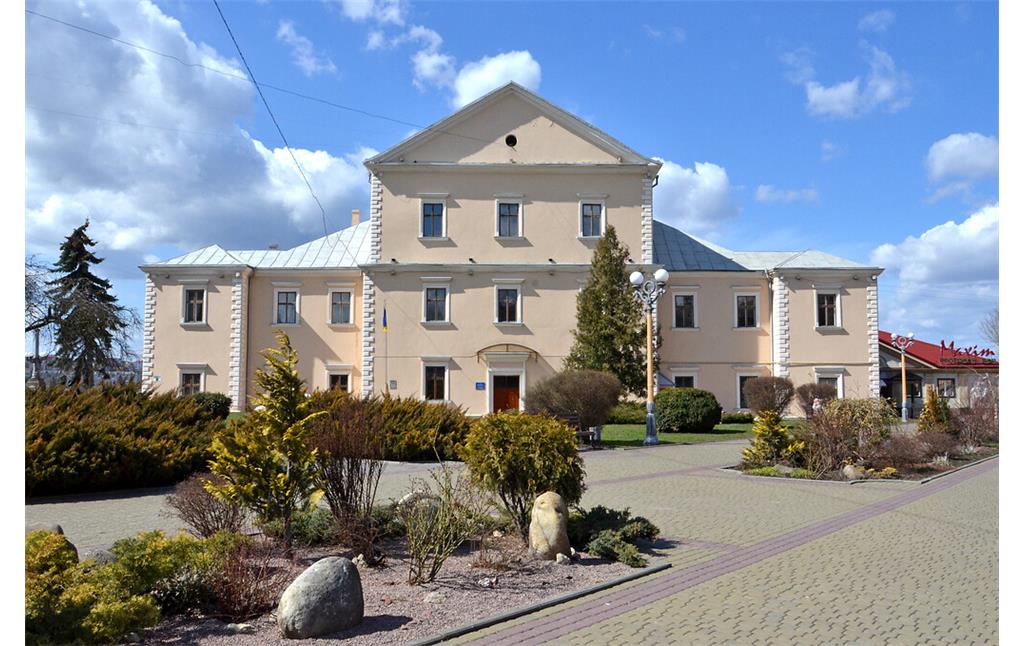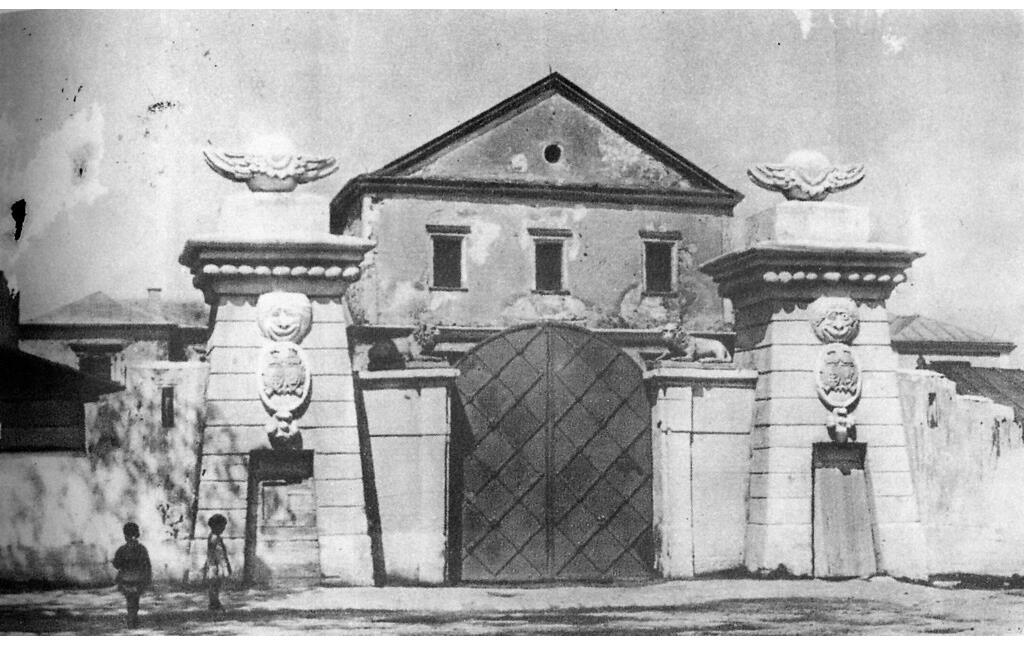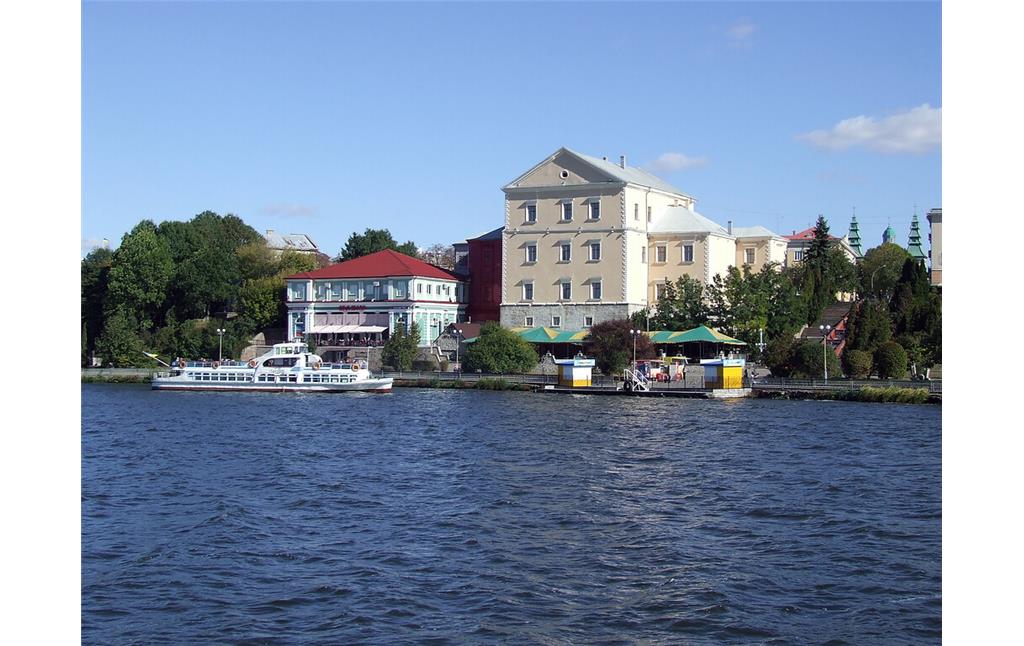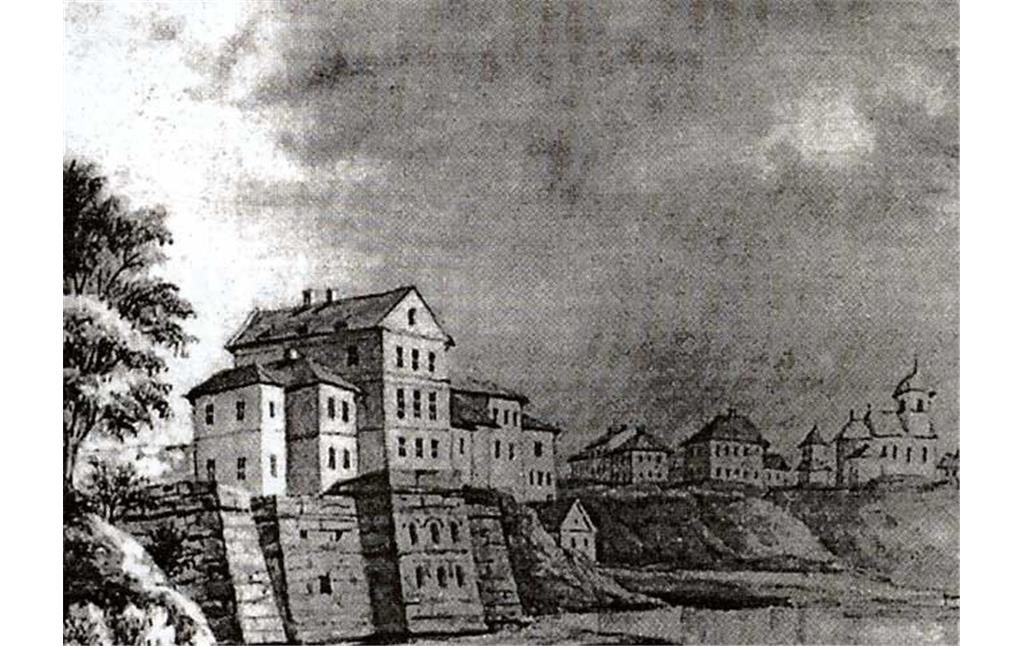
The history of Ternopil Castle officially begins on April 15, 1540. On this day, King Sigismund I the Elder (1467-1548) granted the Grand Crown Hetman of the Commonwealth, Jan Tarnawski (1488-1561), the privilege of building fortifications in the Sopilche tract. Construction work began immediately after receiving this privilege. The main building, the palace in the Renaissance style, was constructed of sandstone and brick in a fairly sloping place, so it turned out to have a different number of floors: from the city side, the building had two floors, and from the pond- three and two levels of deep casemates.
A deep moat was dug in front of the earthen defensive walls. The castle could be reached by a gate from the east. A bridge was built over the moat, which was raised at night. The castle palace had three main floors to the east and two underground floors to the west. The castle served as a cover for the road from the city Terebovlia to the city Busk. The defensive boundaries of the castle on three sides protected the pond and swamps. The fourth side of the citadel was surrounded by a dry moat and an earthen rampart with an oak fence on top.
The castle was built within eight years, and even during the construction work, the masters were forced to fight off the Tatars who wanted to capture Ternopil in 1544. In 1548, the community was granted limited Magdeburg rights, as the city remained the property of the Tarnavsky. In 1540 the inhabitants were exempted from taxes for 15 years, in 1548 for another 20 years from paying duties. In 1550 Ternopil received a privilege, according to which all merchants who went to the auction from Galicia to Volyn, had to come to the city and pay customs duties on its development.
During the First World War the castle was severely damaged, the roof was completely damaged, and there were no window frames. In 1921 the western Ukrainian lands were ceded to Poland. Ternopil became the center of the province. The Poles could not accept the fact that the castle was destroyed in the center of the city, so among the officers of the regiment stationed in Ternopil, fundraising began for the restoration of the castle. The restoration work lasted five years. After the reconstruction of the castle, one of the battalions of the Polish infantry regiment was stationed here.
During the Second World War the building was even more damaged. According to historians, there was a table with the inscription in Russian „Here was the city of Tarnopol.“ In the early 1950's the castle was restored. Since then it houses the Youth Sports School of the Olympic Reserve for Greco-Roman wrestling.
Legends of the castle
Still uncharted and almost mythical are the dungeons built under the castle, which are said to have connected the palace with the Church of the Exaltation and the Middle (Nativity of Christ) in Ternopil. People who managed to visit the dungeons after World War II claim that they are made of stone and have niches for hiding defenders and even torch holders on the walls. No one has carefully checked these stories, but the fact of the existence of voids near Ternopil remains undoubted.
Interesting facts
- Ternopil Castle is a symbol of the city. It is depicted as the main heraldic figure on the new (1992) coat of arms of Ternopil. It is also the oldest building in the city.
- The first watercolor painting of the Old Castle (from the 1870’s) belongs to the Polish artist Napoleon Orda (1807-1883). It is stored in the National Museum in Krakow, Poland.
- Poems were written about Ternopil Castle by local poets Lubomyr Gardetsky, Oleh Herman, Tetyana Luchka, I. Shokalo and others.
Current state
Currently the city authorities plan to move the Greco-Roman wrestling school to another location and place cultural facilities in the castle. In particular, a permanent exhibition of works by the outstanding artist Ivan Marchuk (born in 1936) is planned to be opened in Ternopil.
It is also planned to restore the interior of the castle, including furniture and fireplaces that correspond to that era. The restored castle intends to house at least five objects: an art museum, an art gallery, a city museum, an exhibition of works by Ivan Marchuk, and a hall for ceremonial events.
Research and archeological works are also carried out on the territory of the castle in order to reveal historical details and expand the possibilities of excursion sites for tourists.
Internet sources
drymba.com: Ternopil (old) castle: map, photos, description (Ukrainian)
youtube.com: Secrets of Ternopil Castle and interesting historical facts (Ukrainian)
zabytki.in.ua: Ternopil Castle (Ukrainian)
(Alina Peleshok, Lviv Polytechnic National University, 2022. This object was created during the Russo-Ukrainian War in April/May 2022)
